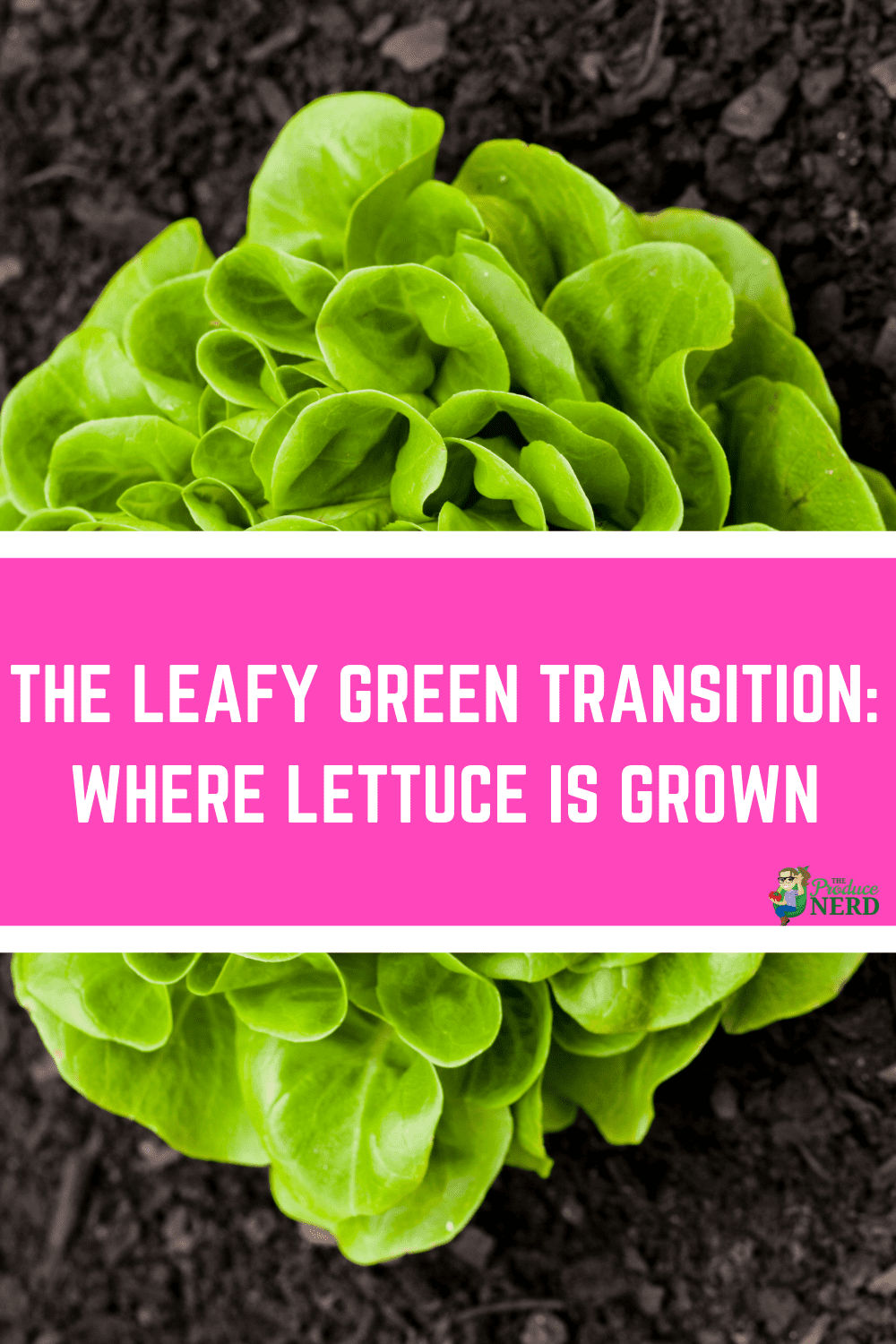Around November each year, multiple leafy green producers announce that they are transitioning their operations to the Arizona-California desert. This is known as the “leafy green transition.” This is no small feat for any of the companies involved. It is actually incredible to see the amount of work that goes into the moves, as well as the work that it takes for the workers to uproot their lives as they move between the two regions for work. So, what does that mean and how does it affect you and your lettuce/leafy green consumption?
Where is Lettuce Grown?
In the western portion of the United States, leafy green production transitions between the Salinas Valley and the Arizona-California desert region. The majority of California production takes place in the Salinas Valley between April and November, with additional production along the Central Coast (Santa Maria and Ventura) and the San Joaquin Valley (Huron).
The transition to the Arizona-California desert, mainly the Imperial Valley of California and the Yuma Valley of Arizona, takes place in November and lasts until April. Huron, California is used as a buffer to provide leafy greens in case any issues arise that may occur during the transition periods around April and November (which is around the time most leafy green outbreaks/recalls occur). And, that is how the same leafy greens are available year-round despite changing climates and seasons.
The Leafy Green Transition
The leafy green transition consists of entire operations (minus the buildings) moving, and not just a switch in location. That includes the wash lines, processing lines, all of the equipment located in their facilities, workers moving away from their families for months at a time, etc. The video below is a great example from Church Brothers of what the leafy green transition looks like for larger leafy green processors.
These large leafy green processors grow their own product, while sourcing from other smaller growers, and when they move their entire operations back and forth between the Arizona-California desert and the Salinas Valley, they are also relocating a lot of their workers, including management positions (e.g., Harvest Manager, Food Safety Manager). Companies either relocate their farm crews as well, or have a crew in each location. To put this into an even greater perspective, even the food safety auditors that are primarily located in California spend the majority of the winter season in the Arizona-California desert because that is where the majority of produce is harvested during the winter.
Other Areas for Leafy Green Production
Although California and Arizona are the largest leafy green producers in the United States, that is not to say that there is not lettuce being grown in other areas to supply leafy greens to the United States, such as Mexico, Canada, Texas, Colorado, New York, New Jersey and Florida. However, this is the perfect example of how much work really goes into bringing your produce to the grocery store. Can you imagine all of the work that goes into transitioning an entire processing plant and group of workers? Or, how hard it would be to be away from your family for five months out of the year? All of this work is done to make it so that leafy greens are readily available for consumers year-round.
If you enjoyed this post, you might also enjoy:
- How Is Your Produce Being “Washed”?
- Baby Romaine Lettuce Harvesting & Packing
- How Fresh-Cut Has Changed the Produce Industry
Resources:
Cook, Roberta L. “Three Part Series: Fundamental Forces Affecting Growers and Marketers, Part 3: The Lettuce/Leafy Greens Sector.” Produce Blue Book Blueprints: Eye on Economics, Jul/Aug/Sep 2012.
Ryder, Edward J. Leafy Salad Vegetables. The AVI Publishing Company, Inc., 1979. Print.

Very interesting – one of those things I’ve always taken for granted. Thanks for sharing.